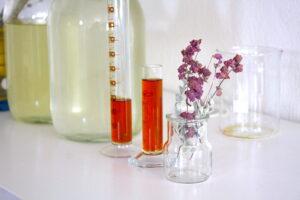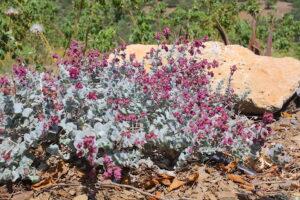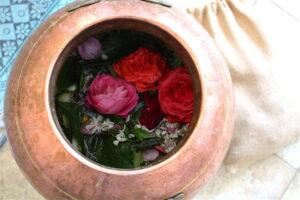Going through my distillation diary, I couldn’t help noticing some concurrences… My first time distilling Cistus creticus in the summer of 2017 happened to be the 14th in the series of my distillations. The second time for the same plant, in just about a year, got to become number 28. I have always loved numbers. They kept entertaining me, they seemed to play all kinds of games with me. Already during those two long decades whilst I had been engaged with the daily routines of excel sheets, commercial calculations, quotations, preparing numbers for accounting, controlling and so on… with endless databases to be kept updated and organised.
Those magical numbers
Those followed by years of search, I got entered into a brand new world of numbers through esoteric studies, discovering mystical constructions and teachings of the Kabbalah, the powerful symbolism of such as the Enneagram and Sacred Geometry. I had come along the way from quite far, through a fairly rational environment, far enough to understand the rolling eyeballs of all the sceptics when such concepts are being even mentioned… In today’s upside-down world, we have at least the freedom to decide for ourselves in regards to how we handle information, and where we put our focus in order to colour our own lives. In fact, it would be highly beneficial and also required for each individuals if they took responsibility for their lives, found their matching methods and made their own decisions carefully. Although, not making a decision is also a kind of decision… anyway, time to cut back these overgrown side-thoughts here, so I can come back to my associations already flowering. What does it all have to do with Cistus creticus, you might righteously ask?

Symbolism of the five petals
Inspiration. Free thinking. Highly important elements which can make things more colourful and meaningful. Taking the example of my distillation Nr. 14 (which is as you can easily see it doubled get us to Nr. 28 – also previously mentioned), and well, adding up the digits we get to number 5. It is obviously just sheer coincidence that I happen to write this article in the month of May that is the 5th month of the year, just to say in brackets really, just to make you smile. In Numerology 5 is change in itself, an adventurous and freedom-loving energy. A living dynamite with lots of Fire.
Are we surprised after all, how it all comes to Cistus creticus that develops beautiful purple blossoms with just exactly 5 amazing petals? That plant that so perfectly represents the balance of the dynamics in 5, demonstrating a strong feminine side with masculine undertones. It’s especially palpable when we have a chance to come close to this shrub that brings about its wrinkled-petal flowers from spring to early autumn, depending which area of Crete you find them. And you find them not only for the purplish-pink colour that jumps out from the green sea of plants, but the unmistakeable unique sweet fragrance of the shrub with a slight bitterness and lots of depth, layers and complexity. A very definite presence yet with a modest appearance.
In May 2015 (all well, these fives again…), doing ongoing researches as I do, I almost got hold of some cistus essential oil and hydrolate for the first time, finding a small producer on a tiny Greek island. I got so enthusiastic, that I immediately placed my order upon my finding their shop on the internet. I was so excited about the treasure hunt, however, soon I got to learn that they had no essential oil, only hydrosol, so my order was canceled. As it happens so very often, a full understanding of certain things and situations comes to you at a later stage through personal experience. And through my own field work and distillation processes I realised that Cistus creticus would not give us neither its resin nor its essential oil just for nothing. You have to work through it…
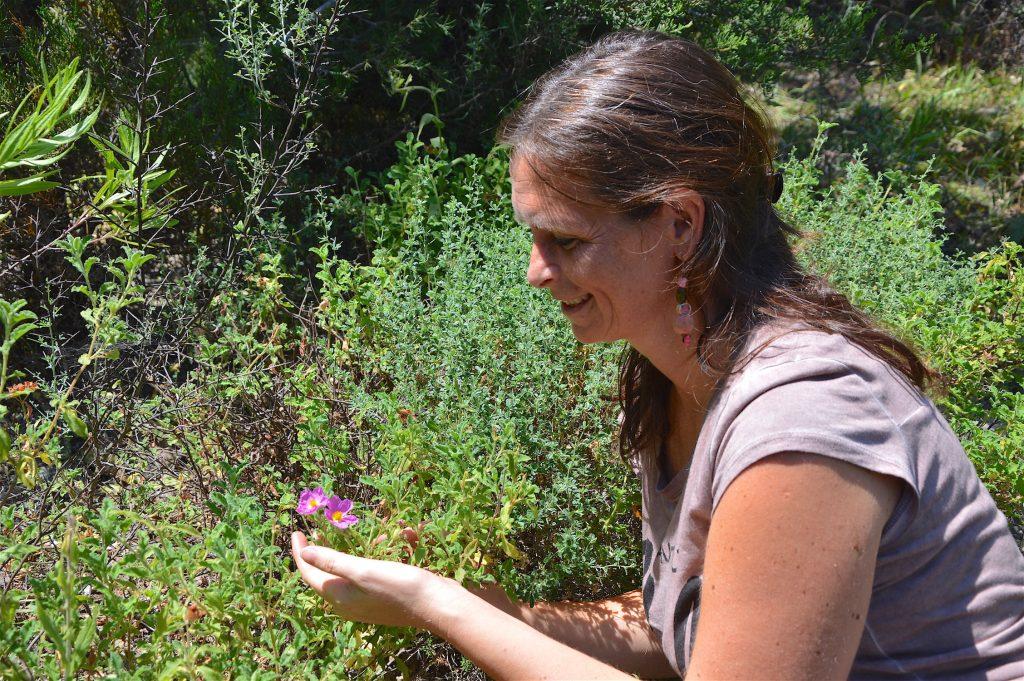
Come to gather and glow
In a previous article at Aromatika Magazin 2017/3 and my corresponding post Cretan Rock Rose, the untold story I already wrote an essay about the resin and its collection of the Cistus creticus plant. Now I am here to share some moments from the experiences that I have gained through my own distilling of Cistus as I introduced my intention in the beginning of this article.
Before the first Cistus distillation, I coupled up with my dear nature-lover friend and natural farmer Manolis Petakakis who guided me around the area of his village, in the mountainous region of West-Crete to find some plants still in flower. A quick side-note here, one big advantage of a 30 liter alembic is that you get to collect enough plant material in a relatively (!) short period of time. My favourite pink colour basket is very practical in a wild shrubby-overgrown area like that, as you could spot it out more easy when in search of plants you happen to walk far away from it unnoticedly…

As it happens, that you have multiple missions on such a journey while primarily focussed on collecting the plants, always with a good heart and with respect for them considering the rules of ethical wild harvest. But then, in the efforts of documenting the process, always carrying a camera on your side and keep taking photographs for both your own research and story-telling. And so you might easily end up spending many more hours than originally planned in this blessed company of the Plant Kingdom. As of course, your research plant is never alone in any environment you go. Just to name a few we met here, we had swinging areas of pennyroyal (Mentha pulegium), wild carrots (Daucus carota) dancing in the wind, St John’s wort (Hypericum perforatum) breaking through asphalt, and cypress (Cupressus sempervirens) kindly offering some shade in the summer heat.
As soon as I got home from the fragrant collection tour, I measured my cistus plants slightly being sticky from the resin on the leaves. The weight of the freshly picked plants was 1690 grams. It is a slow-drying plant so did not loose much by the time I was ready to distill them in two days. However, as we cut down the more woody parts before filling up the still, the working weight became 1250 g. Since we had plenty of material, more than enough to fill the pot and the tower, so I decided to make a mixed distillation (steam and hydro) hoping to get a more complex, rounded hydrosol and possibly giving a chance to produce some essential oil too. Well, to be more exact about the mixed distillation, we put 13 litres of spring water and 935 g Cistus creticus in the pot (that is to say plant and water mixed together), plus 315 g plant in the tower that is not in direct contact with water but will be visited by the developing steam. I kept the distillation running for about 6 hours, where the first drops to arrive needed about 45 minutes.
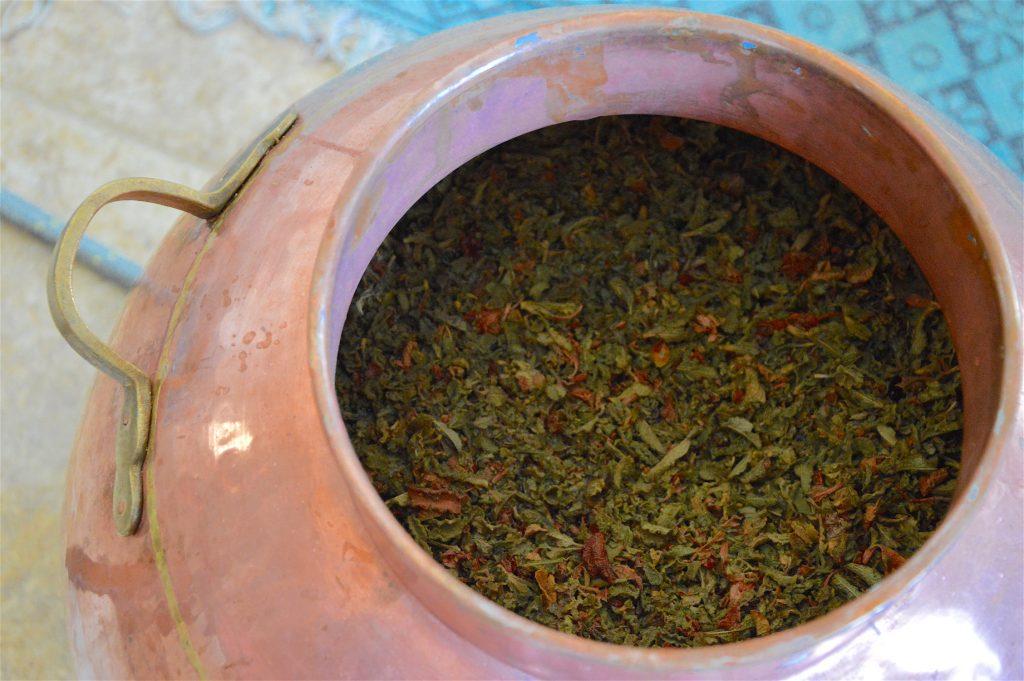
The quality perspective: standards of nature
I just provided some numbers which can actually change according to many variables, including temperature and speed of process. I walk the very personal road of the artisan distillers, invisibly taking part of the “slow-movement” whereas dedicating time and attention to tirelessly and devotedly witness the magic of alchemy. This is a manifold adventure of plant- and self-discovery, a series of endless experimentation with ever-changing variables, unexpected revelations, sensing, surprises and recognitions, where inexperienced wonders are witnessed every time.
Our human mind finds comfort and meaning from comparing things, therefore it seems quite natural that we keep putting efforts into comparing the unmatchable, and regulate the free flow of nature. This is what has been achieved in industrial production, by inventing and forcing standardisation in order to maintain continuity and meet the needs of consumers looking to feel secured. I am not into questioning the importance of maintaining quality approach in all sort of areas of life, but to make you think about defining quality, to look what’s behind the curtains, beyond the surface… To remind you how easily we except such extreme values of so-called ‘standard quality’ where materials – including food and cosmetics that all go into our organically built body – are fully or partially replaced by synthetics harmful to our bodily system. I would not go very far on this road this time, only to close my mind-provoking thoughts with one of my favourite quotes, I believe from the Greek philosopher Herakleitos: “The only constant in life is change.” Good to contemplate over this sometimes…

International adventures
Coming back to comparisons and the distillation of Cistus creticus, here is our chance to feed some data from that distillation Nr. 28 that was the first in the series of my Cistus distillations in the year 2018. I say first, as at the time of writing this article I have plans to do more, in various settings. It happened, that a few days earlier, the Cretan labdanum icon Dimitris Nyktaris came to visit me again. Thanks to our relationship which is woven of many threads, he was kind enough to bring me a few boxes of Cistus creticus that he had previously cut and dried for further use. One box is supposed to travel to the US in a few days, by the request of a company that produces artisan-quality herbal extracts in the Northern continent. The small amount was demanded for an exciting study that is being done with Cistus creticus leaves for a Lyme Disease-related research project at the Johns Hopkins University.
God works in mysterious ways, we could say to this occurrence, for that I could thankfully fill up my retort with Cistus creticus again. To the greatest joy of my aromatherapist and writer fellow Anna Orosz who came from Hungary to spend some time with me for a month of aromatic field trip on Crete. As many who come for such an aromatic adventure, to meet local herbs and participate in collecting and distilling them, Anna also fell into a love-at-first-sight relationship with Cistus. As I mentioned earlier, this was a new set of Cistus distillations, starting with a hydro-distillation this time. That is to say, we put the plants directly into water, first soaking the dry material for overnight. Then the next day to start heating the cauldron and waiting for the steam molecules to born from the hot water, and take with it the most desirable plant compounds all the way up, and then all the way down through the copper serpentine, finally waking up from the long journey of the intoxicating spiral within the cold water.
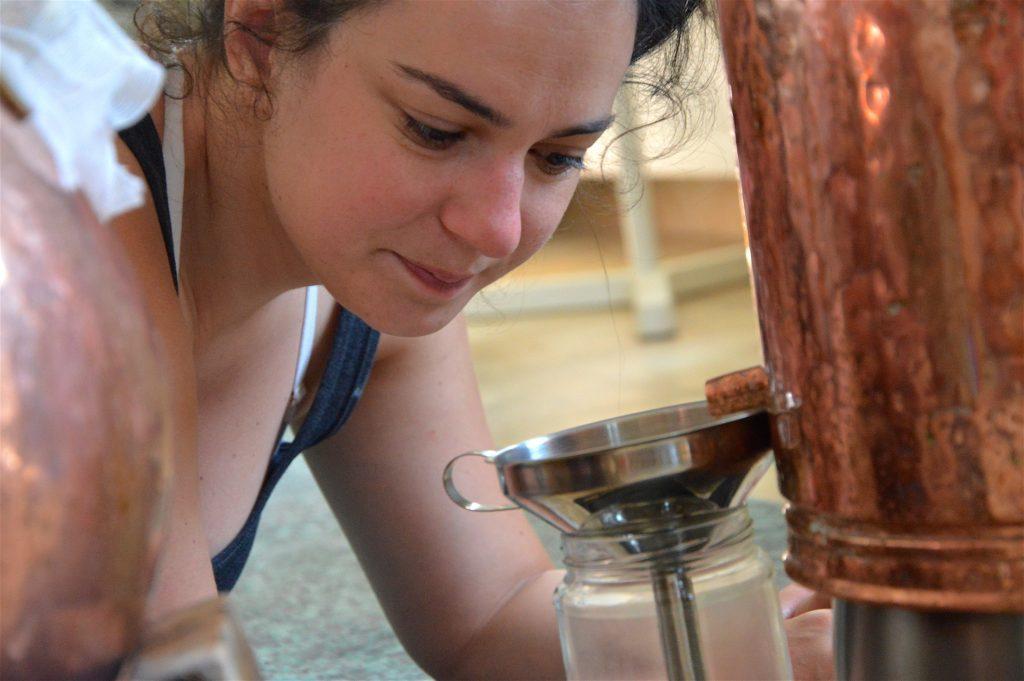
There it was the tower, on its place between the spherical vessel and the onion head, however this latter being empty, just played the role of a corridor. The copper cauldron pot was stuffed with 1190 g of Cistus that surprisingly required more water than that of the freshly picked one last year. We were running the distillation for about 8 hours. Partially, because we had a technical stop replacing the gas supply, then had some issues with gas pressure, and with all this we lost a bit of time. Anyway, we had our work completed. When I do the distillation, I don’t make a continuous separation to set apart essential oil from hydrosol. If there is any oil to be separated at all, considering I am using a 30 liter capacity distiller. The yield of Cistus in this set-up was evanescent, a minimum amount of oil created a thin membrane on top of the aromatic water. Just enough to bring us into a state of delightful contentment and offer some visual joy, in addition to the gracious serenity to our olfactory receptors.
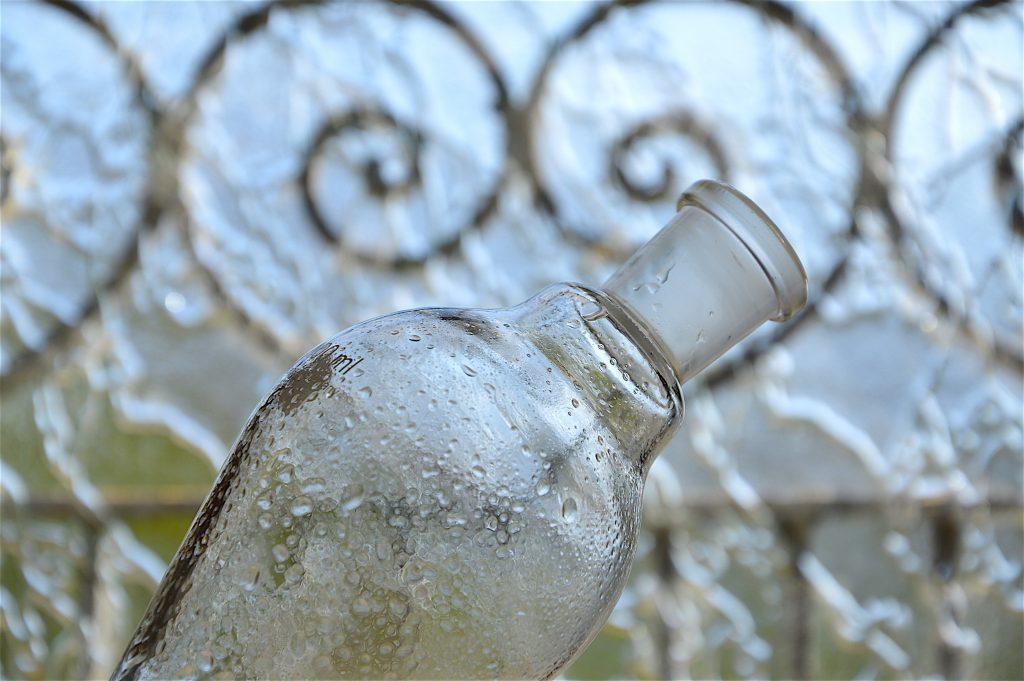
I find the aroma of the Cistus creticus hydrosol is somehow intangible. To verbally describe it I would use words like tender, warm and embracing. Like an Angel coming down to Earth and it’s beyond your 5 senses when you get to deeply feel this connection. But if you do, it is gently guiding, healing and slowly ignites our inner spark by moving around our innate energies.
 The article was originally written for and published in the issue 2018/2 of Aromatika Magazine, an online publication in Hungary to support holistic living, the practice and professional education of aromatherapy, phytotherapy, naturopathy and related subjects. My special thanks and gratitude goes to Gergely Hollódi, editor-in-chief of this beautifully constructed aromatherapy periodical for his always encouraging support. Hope you enjoy the English version in this post.
The article was originally written for and published in the issue 2018/2 of Aromatika Magazine, an online publication in Hungary to support holistic living, the practice and professional education of aromatherapy, phytotherapy, naturopathy and related subjects. My special thanks and gratitude goes to Gergely Hollódi, editor-in-chief of this beautifully constructed aromatherapy periodical for his always encouraging support. Hope you enjoy the English version in this post.












